JIAHUA WU

URBAN LIVING AFFORDABLE HOUSING DESIGN IN WASHINGTON DC
Academic Work
Praxis II at Carnegie Mellon University Spring 2023
The project aims to create a collective housing with ve different scaled uint types. The positioning of the site in the central Washington area became the catalyst of this design, which one which renounces the traditional isolated housing, and instead actively engages with city life and foster social interaction between people with different background in a variety of scale.
Two towers form a path that connects the streets on the north and south sides of the site and a central plaza that invites citizens to circulate up. Various public programs that are missing from the surroundings are embedded into the project to active city life, such as vertical garden, cooking education, grocery store, etc.
As for the building space arragement, public spaces are integrated into each oor and connected vertically on the northeast corner of the buiding. Void spaces are reserved to provide further development possibilities of residents.

Infrastructure Analysis
The surrounding buildings are monofunctional and the service infrastructures and public spaces are far beyond the walking distance.

Data Source: Climate. gov, Open Data DC
UHI & GI Map
The Heat Island effect
is relativly

Urban Farming
To create a self-supporting community and encourage a collective lifestyle, the building is conceived as an urban farming system. The roof terrace and couryard provide enough space for farm land, which not only satisfy the needs of residents' dailylife but also increase green space and therefore reduce the heat island effect in Washington D.C.
of the central D.C. area seriouse due to the large area of concrete surface and the lack of tree canopy and other green infrastructures.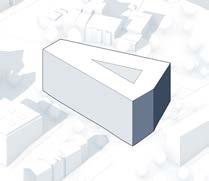
Singe volume is used to occupy the whole site, a central couryard is preserved to ensure the enough daylight.
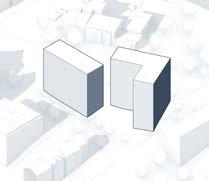
Open the building by dividing it into two towers and promote social engagement.




Triangular squares and a passageway are formed by the two towers to provide a public city space.

Public spaces are located on the corner in response to the crossroad.
To reduce the pressrue on the streets, the massing setbacks while creating more roof terraces that could be used for roof gardening.

Different unit types aggragated together while keeping some blank spaces to adapt to family development in the future.
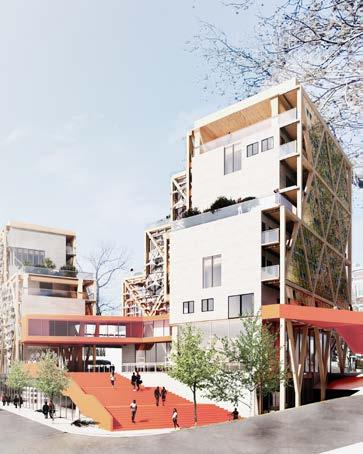
Through-passage Way
The two tower are connected on the second oor with an iconic orange bridge to maintain consistency and permeability of sights and circulation.
A bridge on the second oor connects the two towers while shape the passageway spacially.

Horizontal shading panels overhang above the window to reduce solar heat gain in the summer while ensure adequate winter illumination.
Shape the topography and create a private courtyard for the residents.

Roof terraces and the north facade are designed as green surfaces to promote a sustainable lifestyle.
Strategy and Massing
Each unit has public space on the rst oor, bedrooms and bathroom on the second. Terrace is provided to promote interaction between units.

Public Corner
The spaces on the corner of the building are connected in a vertical direction and open to the public. A public circulation traverses the building volume.









































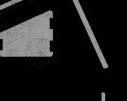



- Ground Floor

























The towers, on north and south sides of the site, enclose a plaza formed by two triangles connected at the center of the site which serves as the living room of the city. In addition to the public programs on the ground oor, the plaza invites the public to pass through and participate in the public activities held there.









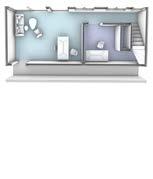


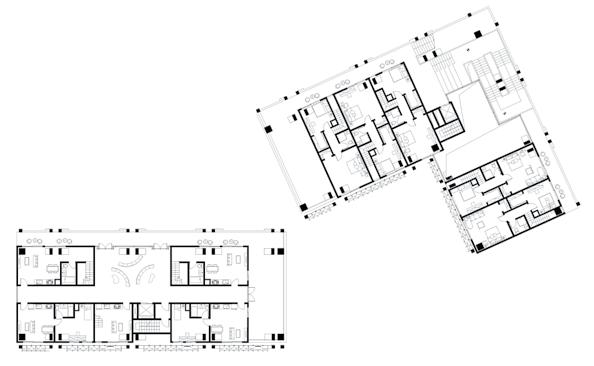



Aeroponic System & Sustainable Living
Aeroponic gardening are applied on the north facade to create a green elevation and puri ing the outdoor air polluted by vehicle. When all the triangular cells are lled by plants, the facade could also serves as a noise barrier.


Rainwater Harvesting Diagram
The rainwater collected from the rooftop are used for irrigation of the aeroponic system, ushing and gardening after ltered on site.
Aeroponic Facade System
Clean water with nutritions are pumped from the ground and distributed to each oor for daily water use and aeroponic cells. The water ows in the pipe is spreaded to irrigate all the plants and vegies planted by residents.


Precipitation & Amount of Water Collected
Considering about the rooftop collection ef ciency, the total amount of the rainwater collection from rainwater harvesting is calculated according to the precipitation of rainwater in Washington DC, which is 80,004 per year.
Two months of storage: 3,840 gal = 513.37 cubic feet Sizing round cistern: 3.14 x radius of cistern squared x max height of stored r = 4.8', d = 10'

The stepped roof shapes the urban image and reduces the mutual obstruction of views between the two towers. The application of shading system on the south side block the excessive sunlight and therefore improve the building's energy performance.



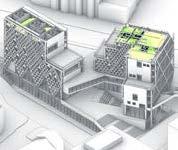



Daylight Analysis
Three representative oors are selected to do the spatial daylight analysis and annual sun exposure analysis. The depth of each oor are controled to guarentee the central area could have enough daylight while the sun exposure of the peripheral area is kept at a lower value.

The chunk model above shows the shading system on the south and the aeroponic facade on the north, as well as how they help shaping a comfortable and sustainable life for the residents.
By

Energy Simulation
from 67 to 34.








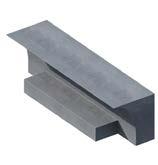

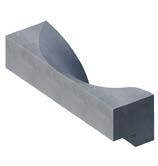

POCHE DILEMMA
A LARGE-SPAN STRUCTURE DESIGN IN THE COURTYARD
Academic Work Group Work
Summer 2019
My Work: Concept proposal and all drawings in this portfolio
This project attempts to explore a new strategy of poche, transforming a negative space into a positive space through the replacement of black and white. At the same time, it combines the perception and experience of the participants in the space to create a poche circulation, thus breaking the barriers between two pairs of contradictions:material and void, internal and external, and giving poche a new interpretation.
The enclosed and heavy wall perfectly isolates the internal space from the external environment. As the only place where you can feel the sun, air and water, the atrium is abandoned due to space constraints. The thick wall evokes our thinking about poche. How to use poche to activate the external space while considering about the site conditions, realize the connection between the inside and the outside, and solve the contradiction in the site is the main topic of this project.


Spacial Sequence & Axis
The main building is located at the end of the campus axis which is emphasised by a wooden plank road and tall trees on both saids of the road. The Triangular shaped library at the start of the axis points towards the main building, furthre reinforcing the status of the building.



3D Poche Interpretation
The bell tower is the symbol of the Tokyo Institute of technology and outlines the skyline.
To understand poche in the way of digging out of the entity, to observe poche from a 3D space, and to perceive poche through the participation of the body.



Longitudinal Section






Multilayered Poche Perception with Body
The detached double skins create a layer of cavity, the penetration of the body breaks the barrier of the solid wall, the addition of the platform realizes the continuity of the inner and outer spaces, and the transparency of the glass provides the possibility of sight penetration. When the individual passes through the rst wall, it seems to have reached the outdoors, and the mirrored poche on the opposite side gives us a sense of being still in the poche. After crossing the second transparent barrier, when the individual stands in the center of the courtyard, he can observe the multi-layered space of the poche from the outside.













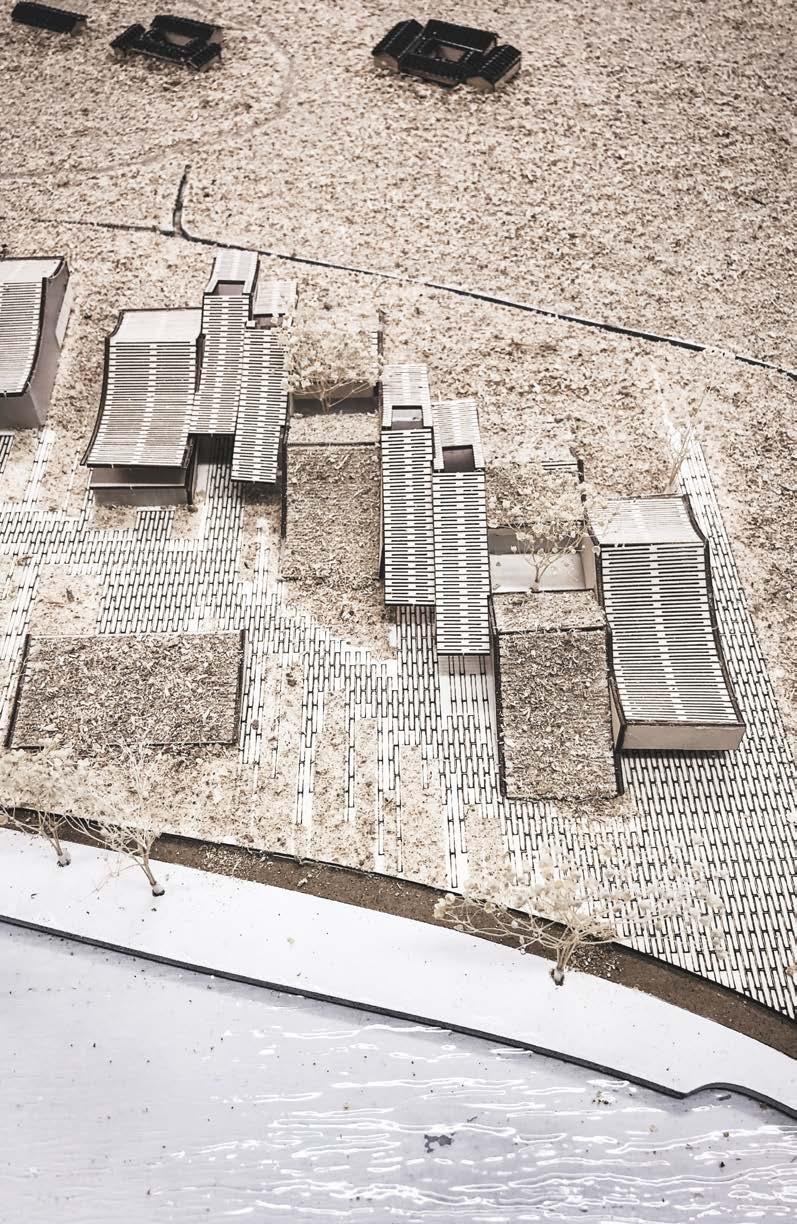
TRANSCENDENT NATURE
AN ARTIFICIAL REPRESENTATION OF NATURE
Academic Work
Individual Work
Spring 2016
When it comes to the relationship between man and nature, the East and the West have completely different ideas. Western civilization originated from hunting, and it tends to conquer nature. The rational way of Westerners thinking pattern requires them to show nature objectively. Eastern civilization originated from collection. People seek to return to the natural state of life, emphasizing the perception of nature with the soul. Therefore, the traditional Chinese view of nature requires architecture to be open to nature.
If architecture is to be integrated into nature, the rst thing that needs to be explored is how to represent nature in architecture. Painting is an art form that best expresses the traditional concepts of Chinese literati, and it is also a way of arti cially representing nature. While architecture is a man-made object, it is also an art. Therefore, this project starts with traditional Chinese painting, and through exploring its expression techniques, the paiting inspires architecture to represent nature and express people's understanding of universe.


Painting is one of the ways for humans to praise nature. Its expression method and painting techniques re ect people's attitude towards nature and the way the viewer connects with the universe.
Since the 13th century, people's consciousness has been awakened, and artists have begun to develope the vanishing points in the xed perspective to reproduce the real space. Chinese painters have always maintained a high-angle parallel perspective painting method. Expressing the spiritual understanding of nature in a transcendent way expresses the concept of the unity of nature and man in Chinese culture.
Xi Guo, a painter in Song dynasty, proposed the "three distances" painting composition method. There is no change in the proportion and perspective in the picture, expressing a dynamic space that integrates time and space. In the parallel perspective of traditional Chinese painting, people walk through the picture from the perspective of God, and the lines in the picture are parallel to each other and have no vanishing points. There are discontinuities in the paintings of different levels of landscapes in the distance: far, middle and near. In other words, different levels of landscape are superimposed together in a way similar to "transparency".
This project attempts to learn from the expression methods of ancient Chinese paintings, starting from the traditional Chinese view of nature, and exploring the way architecture intervenes in nature through the arrangement of various architectural elements. I call it "transcendental nature"
Artificial Method of Nature Representation

Arrangement of Elements
The walls are arranged in parallel and staggered back and forth. In parallel perspective, there is no change in proportion and perspective between the front and the back. They are superimposed on each other, which is a kind of display of traditional Chinese painting.



Undulating and Parallel Volumes
The different types of volumes that are parallel to each other uctuate in height, which is the continuation of the distant mountains.



Overlapping of Parallel Layers





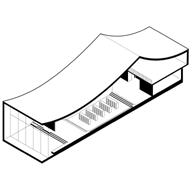


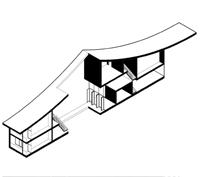


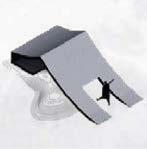




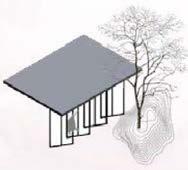

BIO-CORRIDOR A DESIGN FOR TRANSITIONS
Academic Work
Praxis I at Carnegie Mellon University Fall 2022
Our project focuses on and uses biodiversity methods toreshape the urban ecological environment and propose anew way of life between people and nature.We want tobe able to reconstitute an ecological corridor in Pittsburghover time through the implantation of various ecologicaldevices.We study the relationship between people andanimals in the Pittsburgh city through urban environmen-tal analysis.We found ecologically valuable green habitatsin Pittsburgh and studied the relationship between thesegreen spaces and the urban environment. Further, basedon urban research,we found sites that could become newstable habitats.
We selected six site situations with different characteristicsthroughout the ecological corridor:residential areas,industrial areas,parks,public open spaces,and transportationhubs.By analyzing the characteristics of different siteswe propose a exible combination of ecological plug-insThese plug-ins study to meet the needs of different animahabits and human activities, with the aim of promoting theinteraction between humans and different organisms. Wehope that through this method, we can adapt to the needsof different urban environments and people with differentliving habits.





















































































































Development Mapping





Neighborhood Rennovation
Shutting down the one-way streets between blocks and converting them into bioswales while creating spaces for public activities. The central bioswale extends on both sides to the front and back yards of each house. In this way, the design hopes to promote the development of the community as a whole, rather than the development of individual families.






Forming process




Block System

The whole system changes the way of life in the neighborhood, the way of transportation in a variety of ways. Changes in the entire area originate from a single family, and then slowly expand to the entire neighborhood. The family contributes the front yard space and gradually forms a bioswale.
















MODULAR STUDENT APARTMENT DESIGN IN NANJING
Academic Work
Southeast University Fall 2019
The aim of this project is to explore modular building design methods. The site is located in a busy and crowded neighborhood along the Pearl River in Xuanwu District, Nanjing. The site is surrounded by high-rise buildings and traf c congestion, and the internal land use of the site is extremely tight. Therefore, the design rst uses 3m*3m*3m modules to occupy the site, forming a single building volume of 24m in height. On the basis of this, a multi-storey setback is achieved from the west side by subtractive operation to open up the landscape view towards Pearl River. The same is done on the south side to minimize the shading of the building by the neighboring high-rise buildings. In addition, given that the site is located at an intersection, the building removes some modules from the corners to form an entrance plaza, which attracts pedestrians and creates an activity plaza for the public at the same time.


SHKP FUS MIXED-USE DEVELOPMENT COMBINED WITH TOD
Professional Work
Intern Project in Pelli Clarke & Partners Spring 2022
SHKP FUS is a mixed-use development combined with TOD in the Shenzhen City. The site is located in the Shenzhen Bay Super Headquarters Base. The potential of convenient transportation and unique landscape views provided the project a great chance.
The project integrates three major functions: of ce, culture, and commerce. The key to the design is to continue the urban ecology and create a green cross. It also links the surrounding buildings and integrates the development with multifunctional functions such as urban rail transportation. In addition, the 'in nite' form is used in the architectural shape to create a future image and emphasize the character of the city.
















design, but the question is how to stand out?












The site's excellent location and natural resources present both signi cant opportunities and challenges for the project. The x form continues the city's main development lineage, it is futuristic while vitalizing the urban interface, and connects to the central park green axis,



THE EARTH CRYSTAL VANKE HEADQUARTER IN SHENZHEN BAY
Professional Work
Intern Project in Pelli Clarke & Partners Fall 2021
Vanke Headquarter is a mixed-use development in the Shenzhen City. The site is located in the Shenzhen Bay Super Headquarters Base. The potential of convenient transportation and unique landscape views makes it a new landmark in Shenzhen
The Project is positioned as a large-scale high-end headquarter for Vanke and landmark of benchmarking complex, including four kinds of functions: commerce, of ce, hotel and culture. As a high-quality headquarter with ocean view, combined with the cultural and green space, creating a diverse business experience is the main purpose. In addition, with the advantages of the green axis, convenient transportation and complete surrounding facilities, the project also aims to create a botanic garden in the podium.
The key to our design concept is how to create a new and ef cient commercial space. The friendly connection with the city is realized through overhead greening and sinking square. At the same time, the unique curtain wall system provides a good solution for the new of ce in the epidemic era.


